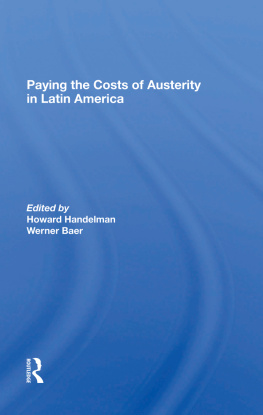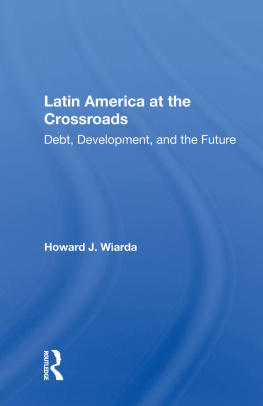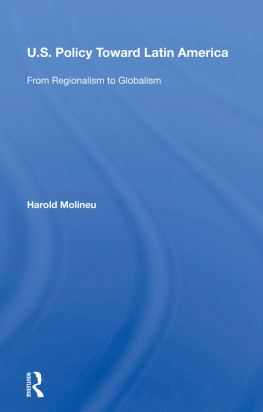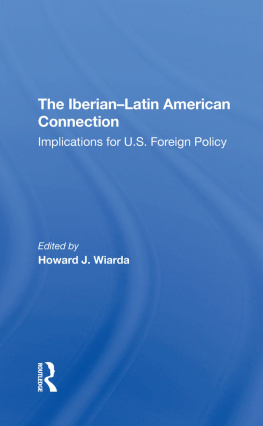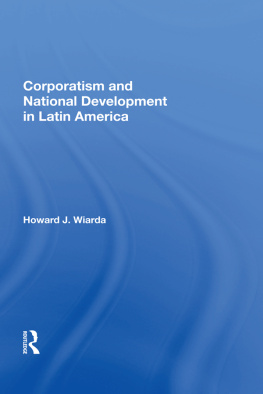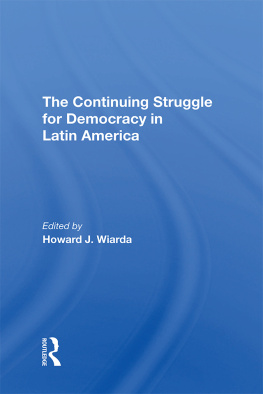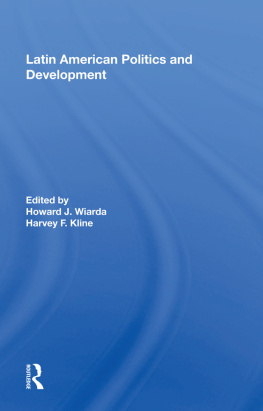First published 1989 by Westview Press
Published 2019 by Routledge
52 Vanderbilt Avenue, New York, NY 10017
2 Park Square, Milton Park, Abingdon, Oxon OX14 4RN
Routledge is an imprint of the Taylor & Francis Group, an informa business
Copyright 1989 by Taylor & Francis
All rights reserved. No part of this book may be reprinted or reproduced or utilised in any form or by any electronic, mechanical, or other means, now known or hereafter invented, including photocopying and recording, or in any information storage or retrieval system, without permission in writing from the publishers.
Notice:
Product or corporate names may be trademarks or registered trademarks, and are used only for identification and explanation without intent to infringe.
Library of Congress Cataloging-in-Publication Data
Paying the costs of austerity in Latin America/edited by Howard
Handelman and Werner Baer.
p. cm.(Westview special studies on Latin America and the
Caribbean)
Includes index.
ISBN 0-8133-7422-7
1. Latin AmericaEconomic policy. 2. Latin AmericaPolitics and
government1980- . 3. Debts, ExternalLatin America.
I. Handelman, Howard, 1943- . II. Baer, Werner, 1931- .
III. Series.
HC123.P39 1989
338.98dc19 88-39013
CIP
ISBN 13: 978-0-367-28247-9 (hbk)
Howard Handelman and Werner Baer
The 1980s have been years of hope and despair in Latin America. The decade has witnessed a series of transitions from authoritarian rule to more popularly based civilian government. During the same period, however, the region has experienced its most devastating economic and financial crisis since the great depression of the 1930s. In nations such as Argentina and Uruguay, political dissidents no longer face the horrible spectre of torture or death squads. More generally in low-income neighborhoods throughout Latin America, however, working-class families now face economic insecurity, declining living standards, and increased malnutrition.
As of early 1979 seven of the nine nations examined in this volume were governed by some form of military or quasi-military government. They ranged from highly repressive bureaucratic-authoritarian (B-A) regimes in Argentina and Chile, through Brazil's more open B-A regime and Nicaragua and Bolivia's venal kleptocracies, to the more benign military governments of Ecuador and Peru. Only Venezuela enjoyed a pluralist democracy, whereas Mexico's single-party-dominant regime combined elements of authoritarianism and democracy. Within only a few years, however, a mass-based revolution toppled the Somoza dictatorship in Nicaragua while elected governments assumed power in Argentina, Bolivia, Brazil, Ecuador, and Peru.
In the economic realm, the trends among the nations studied here have been more varied. For the most part, Latin America sustained rather impressive rates of economic growth during the 1960s and 1970s. Overall gross domestic product (GDP) grew an average of 5.7 percent from 1961 to 1970 and 6.0 percent from 1971 to 1980. In Argentina, Chile, Nicaragua, and Peru, however, average annual growth for the 1970s ranged only from 1.5 to 3.5 percent, in some cases hardly keeping up with population growth. Even where growth was positive, rapidly spiraling inflation in several nations had led to decreased real wages by the late 1970s.
The roots of the current economic crisis lie, in part, with policies adopted in the 1970s. Military governments often showed themselves to be as capable of accumulating huge fiscal deficits as their populist predecessors had been. Civilian administrations in Mexico and Venezuela used their nations' petroleum reserves to secure large foreign debts. During an era of high liquidity in the international financial system, virtually all Latin American nations (with the notable exception of Colombia) availed themselves of cheap credit to finance current-accounts deficits. Private-sector borrowing kept pace with state indebtedness. As a consequence, the region's total debt rose from $59 billion to $331 billion between 1975 and 1982, and reached $410 billion by 1987.
The 1979 oil price shock marked the beginning 91 the economic downturn. Deterioration in the terms of trade for commodity exporters, sharply higher interest rates, and decreased import demand from the economically stagnant industrialized nations all contributed to the debt crisis of 1982. With debt servicing accounting for an unacceptably high percentage of GDP and export revenue, and with major infusions of additional capital no longer available, nearly all the countries of Latin America were forced to consider some form of economic stabilization. Such programs were required to curtail domestic inflation and to correct excessive balance-of-payments deficits. As of the beginning of 1987, per capita GDP (in constant 1986 dollars) was 6.5 percent below 1980 levels. For a number of the nations examined in this volumeArgentina, Bolivia, Mexico, Nicaragua, and Venezuelathe declines were far greater, ranging from 11.9 percent in Mexico to 27.0 percent in Bolivia.
The Economic Costs of Austerity
All stabilization and adjustment programs require considerable economic sacrifice from much of the population. Such programs usually try to contain the forces that have produced inflation and to correct distortions that have grown out of the inflationary process. Orthodox programs, favored by the International Monetary Fund (IMF) and by monetarist policymakers, involve some combination of currency devaluation, reduction of import controls, credit restrictions, reduction of government subsidies on basic consumer goods (including fuel and basic foods), higher prices for public utilities, freeing of prices, wage repression, reduction of public employment, and reduction of the fiscal deficit.
These policies usually produce a slowdown of economic growth, or even a period of decline. Thus, stabilization confronts policymakers with the problem of how to allocate economic sacrifices. Should they be evenly shared by all socioeconomic groups, or should they be borne more heavily by specific sectors? Considerations of equity suggest placing the burden of sacrifice on the more privileged groups of societyespecially in Latin America, with its notoriously inequitable distribution of wealth and income. Yet many orthodox economists maintain that economic efficiency requires lower income groups to bear a substantial share of the burden. As credit becomes more restricted, the private sector faces declining profit margins. Unless workers' wage levels are depressed, these analysts argue, many firms will face bankruptcy.
Policymakers must consider not only the distributional effects of stabilization on different socioeconomic classes but also the allocation of sacrifice between sectors: exporters versus importers, industry versus agriculture, the private sector versus the state. IMF stabilization and adjustment programs usually favor exporters, agricultural producers, and the private sector. Ultimately, government policy will be based not only on the regime's ideology and the orientation of its "economic team" but also on the relative ability of various interest groups to protect themselves in the "battle for shares" and on the capacity of the state to impose sacrifice on particular classes and sectors. Looking at the content of typical orthodox stabilization-austerity programs that periodically have been attempted in Latin America, we may assess their distributional impact.


